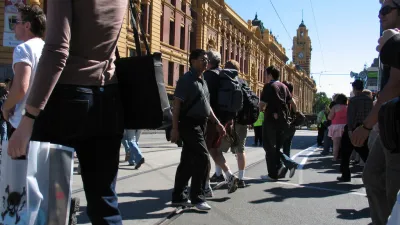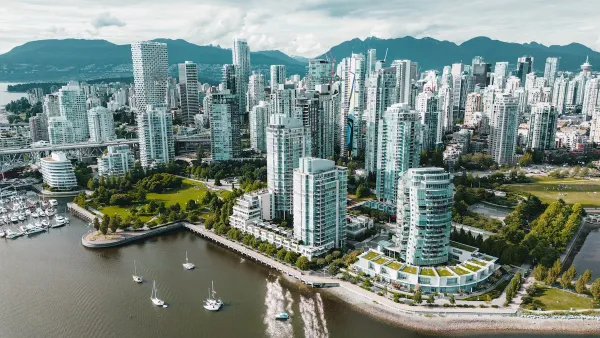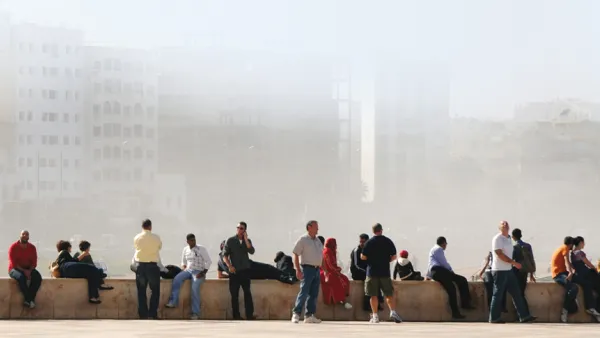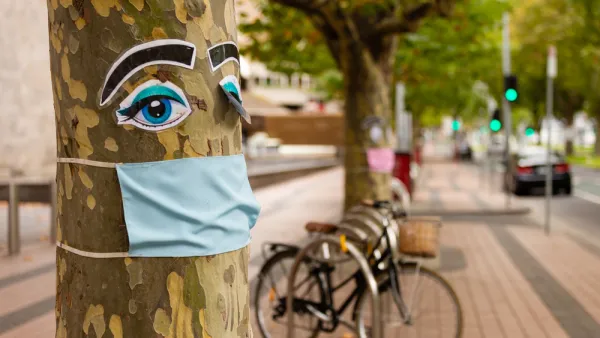Danish architect Jan Gehl and a steadfast group of local collaborators have transformed Melbourne from a lifeless 9-5 city into a preeminently livable place. Mitra Anderson-Oliver looks at the principles that have guided their work.

"Working with the City of Melbourne in 1993 (Gehl was invited by the council to conduct a Public Spaces and Public Life survey – and again for a 2004 update [PDF]), a key recommendation was to create opportunities for outdoor dining, mimicking the success of the grand boulevards of Paris and the communal squares of Rome," notes Anderson-Oliver. "The suggestion was ridiculed in a city famous for its icy southerlies and four-seasons-in-one-day climate. Yet, twenty years later, Melbourne boasts the highest ratio of street furniture per person in the world; outdoor cafes have increased from less than 50 in 1990 to over 600 today; the number of pedestrians in the city on weekday evenings has doubled; and Swanston Street has more pedestrians per day than Regent Street in London."
"Forty years of this close observation of human behavior (rather than a more theoretical engagement with urban studies: 'I am not much into reading', he confesses) lies behind Gehl’s core beliefs of treating pedestrians and cyclists 'sweetly' and the need for the city to be an 'invitation' to spend time, a welcoming and sustaining place for people to live. 'A good city is like a good party', he says. 'You know it’s working when people stay for much longer than really necessary, because they are enjoying themselves.'"
FULL STORY: CITIES FOR PEOPLE: JAN GEHL

National Parks Layoffs Will Cause Communities to Lose Billions
Thousands of essential park workers were laid off this week, just before the busy spring break season.

Retro-silient?: America’s First “Eco-burb,” The Woodlands Turns 50
A master-planned community north of Houston offers lessons on green infrastructure and resilient design, but falls short of its founder’s lofty affordability and walkability goals.

Delivering for America Plan Will Downgrade Mail Service in at Least 49.5 Percent of Zip Codes
Republican and Democrat lawmakers criticize the plan for its disproportionate negative impact on rural communities.

Test News Post 1
This is a summary

Test News Headline 46
Test for the image on the front page.

Balancing Bombs and Butterflies: How the National Guard Protects a Rare Species
The National Guard at Fort Indiantown Gap uses GIS technology and land management strategies to balance military training with conservation efforts, ensuring the survival of the rare eastern regal fritillary butterfly.
Urban Design for Planners 1: Software Tools
This six-course series explores essential urban design concepts using open source software and equips planners with the tools they need to participate fully in the urban design process.
Planning for Universal Design
Learn the tools for implementing Universal Design in planning regulations.
EMC Planning Group, Inc.
Planetizen
Planetizen
Mpact (formerly Rail~Volution)
Great Falls Development Authority, Inc.
HUDs Office of Policy Development and Research
NYU Wagner Graduate School of Public Service





























